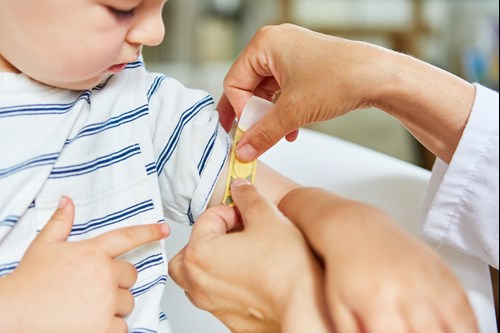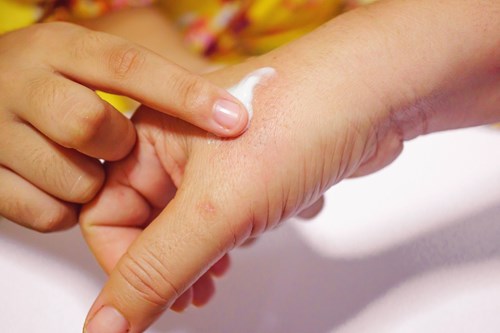Myths around first aid
Many of these first aid myths come from misunderstandings from training courses or via social media posts without medical guidance. Following false information may lead to endangering yourself, worsening your casualty’s condition or delaying the professional help required.
The best way to bust false myths is to ensure information is only ever followed from professional sources (such as: Tigerlily Training, NHS guidance, or Health and Safety Executive) and to always seek clarification if the information does not match what another professional source has told you. Tigerlily are always happy to answer any ongoing queries you might have and can even draw upon their vast range of trainer specialisms to provide additional clarity on overlapping subject areas (for example, fire safety).
Let’s explore the most common myths and debunk them….
- First Aid Myth: “You can’t put plasters on children in case they’re allergic to them”
There’s no rule that says that an adult is not allowed to put a plaster on a child. In fact, plasters can stop bleeding and cover open wounds, minimising the risk of further infection or harm. Plasters should be individually wrapped, of assorted sizes and appropriate to the place of work. For example, blue plasters for anyone handling or preparing food. If you know a person is allergic to plasters – get some hypo-allergenic plasters to use instead. The government guidance ‘First Aid in Schools, Early Years and Further Education’ even refers to plasters in their document (listed as ‘individually wrapped sterile adhesive dressings’).

- First Aid Myth: “If you have a nosebleed, you should tilt your head back”
If you tilt the head back, blood can go down the throat – which can be dangerous. It risks choking, and it can cause blood to travel to the stomach, possibly leading to irritation and vomiting. Instead, we should tilt the head forward, pinch the nostrils shut (just beyond the bony part of the nose) and encourage the casualty to breathe through their mouth. If bleeding hasn’t stopped within 30 minutes, the casualty needs to go to hospital.
- First Aid Myth: “Put butter on burns”
Butter is great on lots of things – but a burn isn’t one of them! After a burn occurs, we want to use something which cools the affected area and keeps it clean. Butter could heat up from the burn, further increasing the burn damage. It will likely enter the wound as it melts and increase the risk of infection. Instead, use cool running water for at least 20 minutes to remove the heat. If possible, remove any jewellery or watches unless sticking to the burn and cover the burn with a layer of cling film to keep it sterile.

- First Aid Myth: “If an unresponsive person has vomit in their mouth, scoop it out with your fingers”
Don’t be tempted to put your fingers into the mouth of an unresponsive casualty to scoop vomit out. It’s ineffective – you’re not going to get it all out, you could push vomit (or anything else) further in and there’s always the possibility that the casualty might bite you without meaning to. Instead, get them into a draining position (such as the recovery position) and let gravity remove the vomit. As soon as the airway is clear, monitor their vital signs again and be prepared to take further action.
- First Aid Myth: “If someone is having a seizure (/convulsion/fit) you should place something in their mouth to stop them from biting on their tongue or it rolling back”
When someone has a seizure, nothing should be placed in their mouth as they may choke/swallow it or injure their teeth. In most cases people’s jaws are clenched shut during a seizure, therefore forcing the mouth open could be dangerous to both you and the casualty. Instead, you should let the casualty have the seizure and place them on their side once the seizure has finished.
- First Aid Myth: “If someone feels faint, put their head between their legs”
This is a popular treatment that we often see on TV. However if someone is in this position and does then faint, they’re likely to fall forwards and land on their face or head, making the situation worse. People faint when blood flow to the brain is reduced, limiting oxygen getting to the brain. Therefore, any treatment we given our casualty should aim to increase the blood blow to the brain with minimal pressure to the heart. The best treatment for someone who feels faint is to lie them down and raise their legs 15-30cm. This will increase blood flow to the brain and stop any potential injuries from falling over.
- First Aid Myth: “Calling 112 on your mobile gives the emergency services your location”
Unfortunately, this is not the case. Although 112 is the European number for emergency services, calling 112 or 999 gets you through to the same service in the UK. The emergency services will still need to know where you are so that they can come and help. Thankfully, there’s lots of ways to know where you are these days; you can use Google Maps or what3words to share specific details.
- First Aid Myth: “A heart attack and cardiac arrest are the same thing”
Nope. Although the media and many other agencies use the terms heart attack and cardiac arrest interchangeably, they’re different medical conditions which require different treatment from you as a first aider. At a basic level, the easiest way to distinguish between the two is that a person experiencing a heart attack will still be breathing and might still be responsive. A person in cardiac arrest won’t be breathing and will always be unresponsive. A heart attack and a cardiac arrest are both emergency situations; call 999 or 112 straight away if you suspect either are taking place. The British Heart Foundation have an excellent post and video on this subject.

- First Aid Myth: “You must be trained to use an Automated External Defibrillator (AED)”
Public Access Defibrillators (PADs) such as those on the outside of buildings and in public access areas are designed to be used by anyone. Once switched on, they talk you through everything you need to do. So, if you’ve never been trained – just switch it on and follow the instructions. Although there is not one central register of AED locations, Defibfinder can help you locate your nearest registered AED and lists hours which the AED may be accessible.